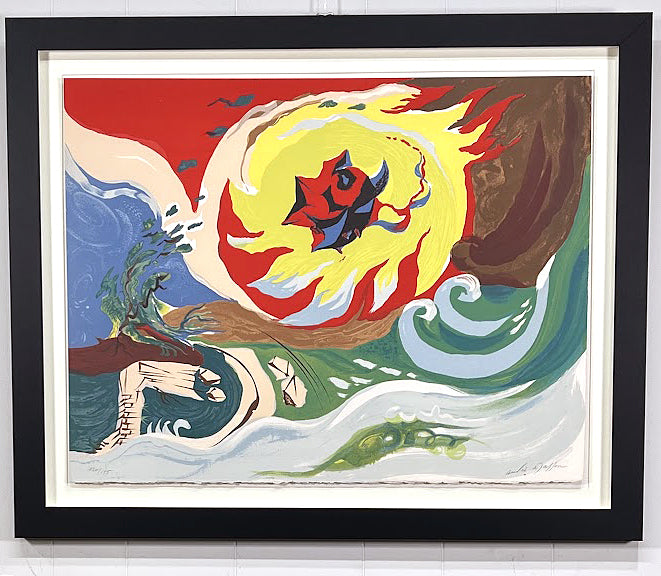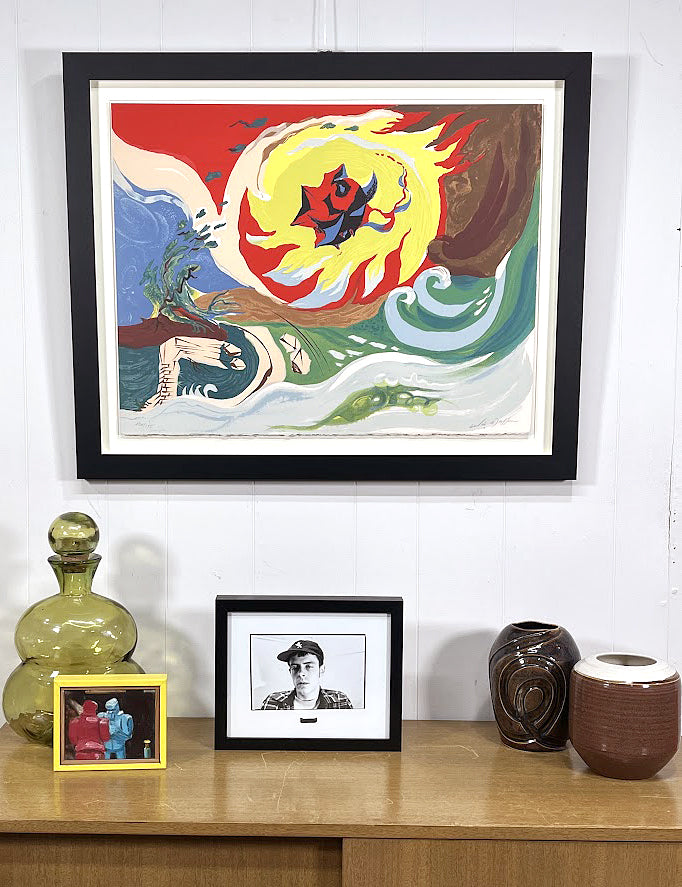1
/
of
2
System Systems
ANDRE MASSON (1896-1987) Limited Edition Lithograph "Wave of the Future"
ANDRE MASSON (1896-1987) Limited Edition Lithograph "Wave of the Future"
Regular price
$795.00 USD
Regular price
Sale price
$795.00 USD
Unit price
/
per
Couldn't load pickup availability
Share
ANDRE MASSON (1896-1987) Limited Edition Lithograph titled Wave of the Future from 1976.
Dimensions:
Medium: Lithograph print on Arches
Provenance: Hand-signed by the artist lower left. Edition number on lower right.
Edition: 120/145
Year: 1976
Condition: Excellent
ABOUT The Framing and Mounting
28.75". x 22.75" Black (1.5") Frame moulding, 1" matt window + float mounted. 5/8" white spacers + UV Glass. The frame and print are in excellent condition.
ABOUT The Artist
An early Surrealist and devotee of Cubism—who went on to inspire the New York Abstract Expressionists before taking up a late interest in impressionistic landscapes—André Masson was an iconoclast whose abrupt stylistic transitions defy classification. Along with Joan Miró, he explored automatic drawing, seeking to express the creative force of the unconscious. This led to images—like the celebrated Battle of the Fishes (1927), a poetic depiction of conflict and metamorphosis with undertones of primordial eroticism—derived from random gestures and drawn spontaneously in glue, then sprinkled with colored sands for added texture and complexity. His signature violence, evident in the terrifying, fragmented figures of In The Tower of Sleep (1938), reflects the horrors of the Spanish Civil War and WWII, as well as his own troubled psyche in the aftermath of his service in WWI.
Andre Masson was born in Balagne, France on January 4,1896. He was an engraver, sculptor, stage designer and writer; he was one of the leading figures of Surrealism. He was admitted to the Academie Royale des Beaux-arts et l'Ecole des Arts Decoratifs in Brussels, Belgium at the age of eleven.
Masson was severely wounded in the First World War and was deeply scarred emotionally. His pessimism was accompanied by a profound and troubled curiosity about the nature and destiny of man and an obscure belief in the mysterious unity of the universe, to which he devoted the whole of his artistic activity to penetrating and expressing. In the early 1920s he was influenced by Cubism, but in 1924 he joined the Surrealist movement and remained a member until 1929.
From 1934 to 1936 he lived in Spain and in the years between 1941 to 1945 he took refuge from World War II in the United States. He settled in Connecticut, dazzled by the colors of the New England autumn. There his work formed a link between Surrealism and Abstract Expressionism. In 1945 he returned to France and two years later settled in Aix-en-Provence, where he concentrated on landscape paintings. He died on October 28, 1987.




